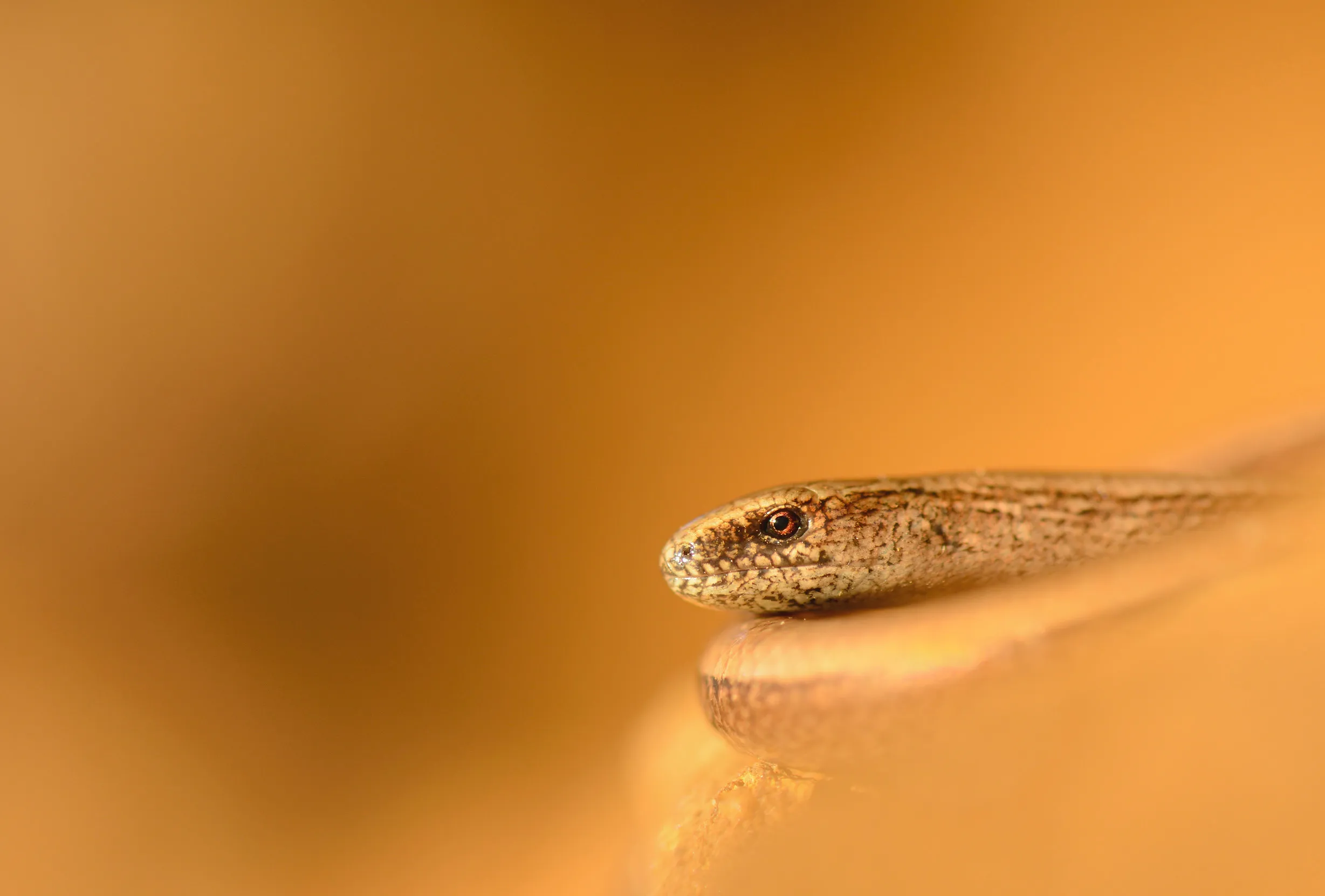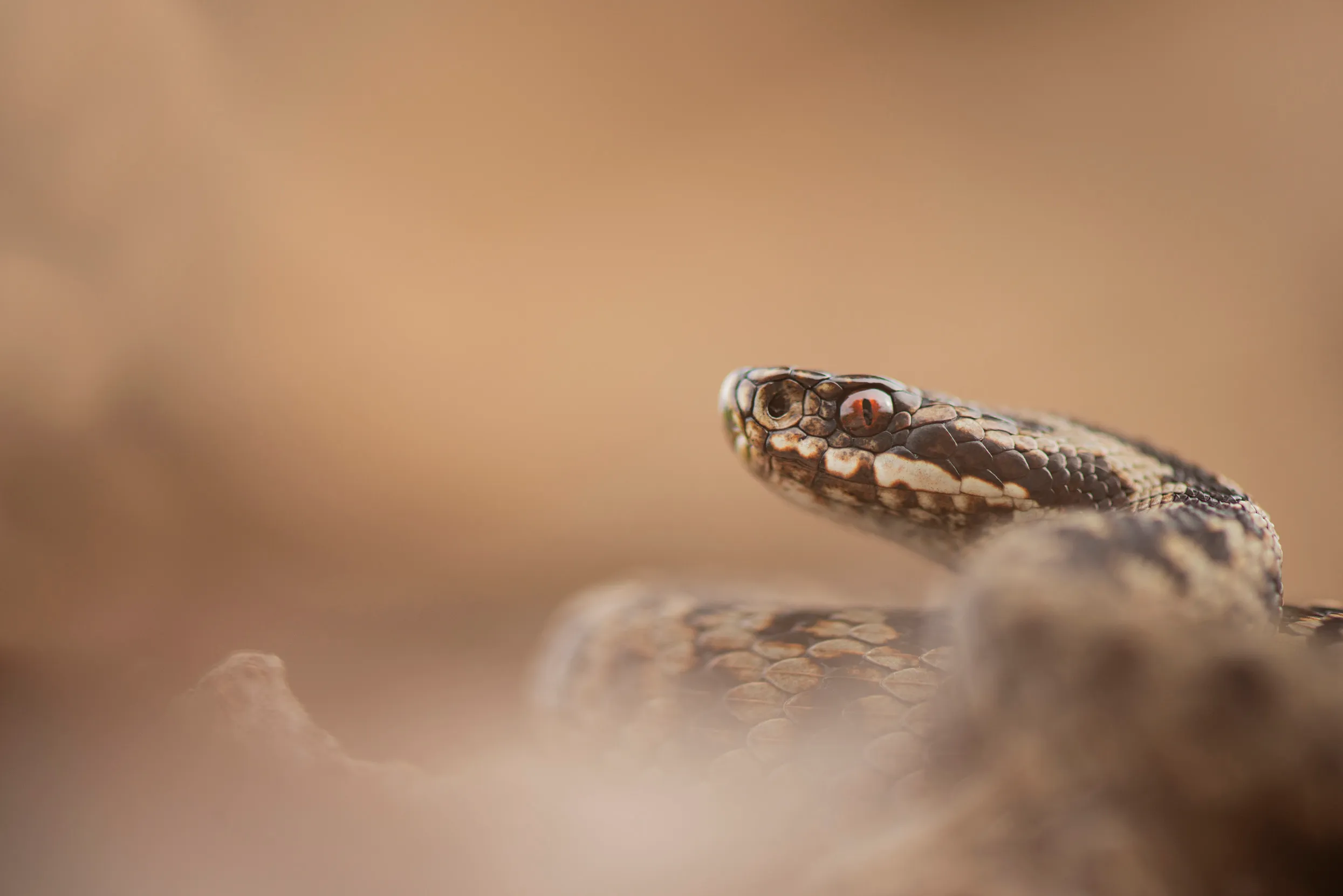Root for the reptiles
Think RSPB nature reserves and you probably think lots of brilliant birds. It’s true. But look closer and you’ll find a wealth of other threatened wild things...including more native UK reptiles than you might think.

On this page
Root for the reptiles
Go on, how many reptile species are native to the UK? It’s six! Three species of snake and three species of lizard.
Reptiles, particularly snakes, can give some a fright when they’re discovered basking in a sunshiny garden, but most of our reptiles are vulnerable and need protection. All over the UK their preferred habitats have gradually been destroyed and become fragmented, particularly healthy heathland where many reptiles thrive. Without this habitat there is less space for them to live and less prey on which to feed. That’s why these shy creatures need our support more than ever. We’re working with lots of other teams and individuals to preserve their natural habitats around the country including on our nature reserves. Each one is a vibrant home for many species, not just birds!
So, are you ready? Let’s dive into the wonderful world of rooting for reptiles.

Play snakes and adders
Take a look through our reptile ID cards, then try your hand at spotting the scaly six.


We're here for the scaly six
One of the best things about conservation is that when you work to protect a natural area, you help lots of species. Take Arne reserve in Poole Harbour – careful land management here has created a rich patchwork of habitats for reptiles, amphibians, birds, plants, insects and mammals.
Today, Arne is one of the few places in the UK where you can glimpse all six of our native reptiles (if you’re patient enough). Venture onto one of Arne’s heath footpaths on a warm, sunny day and you might catch the tail end of a Sand Lizard skittering away, or a surprisingly speedy Slow Worm.
Traditional grazing methods are fantastic for maintaining the wide-open heathland, so it’s not unusual to see cattle, ponies and pigs munching on the bracken at Arne. Gently grazing the land helps to keep invasive species down, allowing the gorse and heather to thrive. It also results in bare sandy patches, perfect for Sand Lizards to dig and lay their eggs, and snakes to bask.

If you’re lucky enough to spot our rare reptiles, it is important not to disturb them. Never try to touch them and keep dogs on leads.
Representing the reptiles
Big restoration projects, like the work at Arne, provide a real lifeline for thousands of species. But did you know that conservation charities are used to playing together? We collaborate on all sorts of projects to protect wildlife across the UK, such as:
- Back from the Brink was a project run by Natural England. We helped a host of vulnerable species in this three-year project, including adders.
- NatureScot is currently leading on Species on the Edge.
- In Wales, there’s Natur am Byth (Nature Forever), led by Natural Resources Wales.
- Snakes in the Heather is an ambitious project led by Amphibian and Reptile Conservation to conserve the smooth snake throughout its range in Southern England.
When conservation charities work together, we can bring about real change that helps individual species, whole ecosystems and biodiversity at large. But this work couldn’t be done without the millions of people who support their work.

So, will you root for our reptiles?
Discover our guides to creating a compost heap, digging a pond, or building a slow worm sanctuary in your garden.